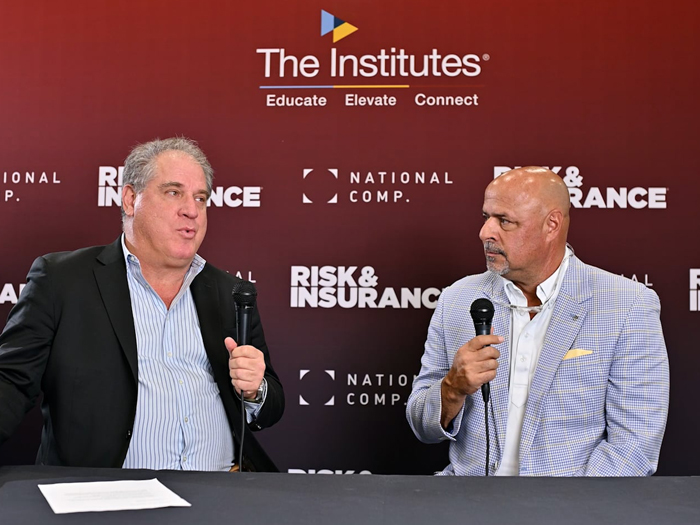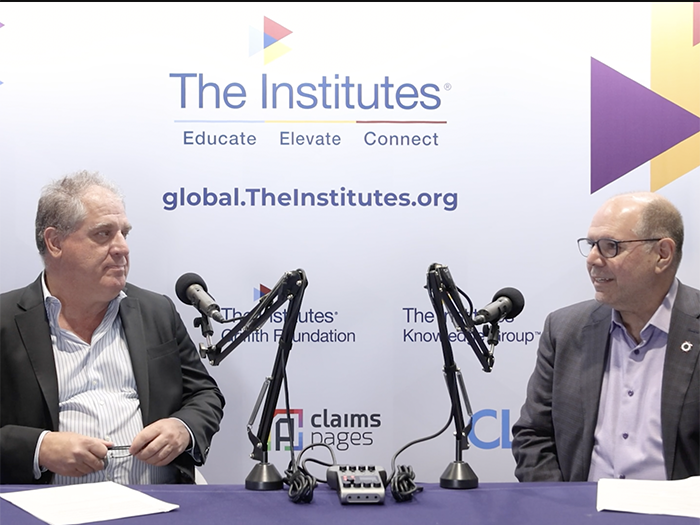Worldwide Broker Network’s Alan Fergusson Provides Key Insights on the Employee Benefits Landscape

In December 2021, Worldwide Broker Networks announced the appointment of Alan Fergusson as its global employee benefits practice leader.
Recently, Fergusson sat down with Risk & Insurance to discuss the employee benefits landscape and how major recent events, like the pandemic and the Great Resignation, have changed the way benefits are being viewed by company leaders.
Risk & Insurance: Which benefits are employers seeing the most demand for from their employees?
Alan Fergusson: We’ve moved from a benefits environment in which the discussion centered around benefits of health, life, disability and retirement. These are expected benefits, and they will likely exist in some way.
But there are benefits within benefits: Elements of these which have a much greater impact in the here and now for employees that will have positive effects. There’s more engagement with the employer. So, things like embedded wellness benefits have been amplified during the pandemic, significantly, and it’s fueled an upsurge in wellbeing applications.
A lot of the providers and carriers have partnered with wellness providers to offer their services embedded within their actual policies, and that’s had a very positive effect on employees’ mental, physical, financial and social wellbeing.
Finally, there’s been an overriding factor the last couple of years, and it’s that employees and their families still want to be provided for and protected by their employers. So, a good retirement plan in which the culture of the employer is reflected is starting to also come through employee feedback.
R&I: What’s the most striking way the remote work/hybrid workplace dynamic has impacted what benefits employers offer their talent pool?
AF: Stating the obvious: There was no point in offering benefits that lived at the work address, because employees couldn’t access them. I follow the “work from everywhere” culture, because it’s a trend that’s starting to happen where employers are not requiring a return to the office or new positions are being advertised as completely remote.
The talent pool is obviously much larger, but employers then need to be aware of some obvious benefits they could offer, such as a work-from-home allowance. Another is equipment, such as a desk or a chair, because employers want to make sure that ergonomically they are doing the best by their employees to avoid future claims.
The access to telemedicine has exploded during the pandemic, and the advances in this field have been nothing short of amazing.
A McKinsey study done in July 2021 concluded that the usage on telemedicine has stabilized at 38 times the level it was at before the pandemic. That’s just an astounding number. This benefit is now clearly expected by employees, and employers that don’t offer it will find themselves at a disadvantage.
Communication and flexibility within employee benefits have, in a sense, become benefits themselves. Employers communicated more with employees during the pandemic than ever before.
With the flexibility comes an element of benefits personalization as well. Employers are allowing choices within their benefits, and benefits are starting to meet the employee where they are in their career path.
R&I: How sharp is the increase in demand for supplemental health insurance in your network overall?
AF: The demand is different in certain parts of the world. The data we observe is a percentage of GDP spent on health insurance. The most up-to-date figures come from 2020, and it was just short of 17% of GDP in the U.S., which is a huge number.
The average across 38 OECD countries is 8.8%.
So not only is there an increased demand for supplemental health insurance as a direct answer for some of the issues that the pandemic brought on, but the relationship with the employer has changed to an extent. We saw risk managers who were not engaged with HR or people issues, but this has changed significantly.
It’s also important to note responses to employees’ increased stress. For example, mental health services that were offered throughout the pandemic will increase exponentially.
R&I: As the Great Resignation continues, how can benefits offerings adapt in response?
AF: There’s been a lot of pent-up demand, which has been exacerbated by several things. The pandemic is one of them. Employers’ reactions to the pandemic are key. An employer may be mandating a return to the office that doesn’t suit a lot of people, because they’ve amended their lifestyles.
Instead of the Great Resignation, it’s almost a Great Realization and more about having a fulfilling life, making choices for the employee rather than the employer.
But how can benefits play in to all of this? I prefer to look at it as a tool for reward response from employers. Employers use the flexibility of benefits to attract the kind of employees they want, but they also need to communicate to make sure they are providing the benefits employees would want.
Go and get the data, employers have it in their claims data and HR systems. Bring the data together and make sure you are giving your employees what they want and need, and make sure the benefits are inclusive and reflect the company culture and purpose.
R&I: When compared to compensation and overall job engagement and satisfaction, how important a place does the employee benefit package, (health insurance, paid time off, etc.) hold in the minds of the labor force now, compared to five years ago?
AF: I think it remains a vital part of the employee value proposition. The technology over the last five years has brought employers much closer to employees and employees much closer to their benefits.
Employees are no longer waiting for an annual statement to arrive; they can access this information with the click of a button. Employees are looking at this much more than they did five years ago. In a benefits sense, they’re asking, “What’s the purpose of this organization? Does it align with my thinking?”
The accessibility and usability of that benefits package is a major part of the employer/employee relationship.
R&I: What new or innovative benefits do you see employers offering going forward?
AF: There’s always something new, and benefits is no different. We’re seeing an increased focus on flexibility across different benefits, such as paid time off, holiday flexibility and work trips.
There are aspects like fertility benefits for employees, more recognition and assistance for women around the challenges they face during menopause. There’s also pay on demand, which links back to financial wellness benefits.
Now, globally, there’s cost of living increases that we haven’t seen in many years. So how can employers make the best use of the existing benefits they have to encourage employees to save money?
Connecting the dots is the best advice we can give to employers because a lot of what they need is embedded in what they already have, they perhaps don’t know it’s there. And unlocking the potential of their existing tools is sometimes the secret to being a bit more innovative. &










